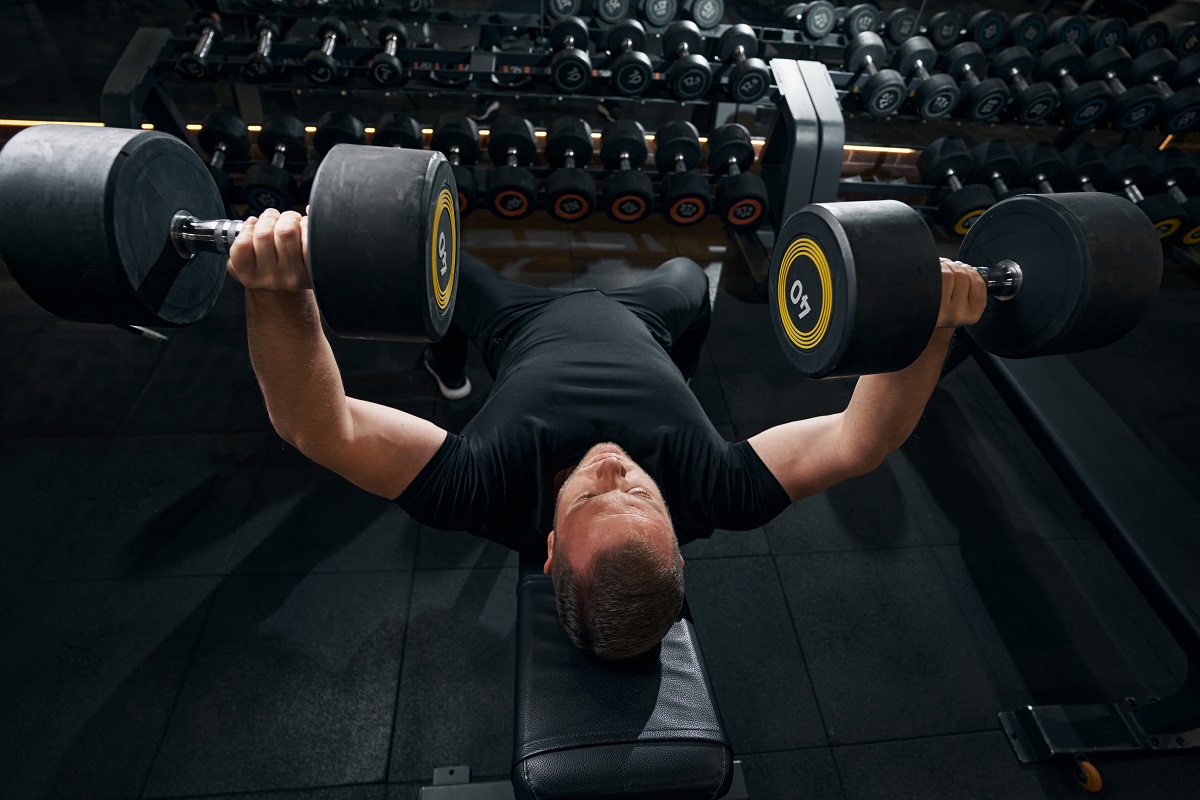Maximal strength training is a highly effective method for increasing muscular strength, functional capacity and athletic performance. This guide will comprehensively cover the principles, key exercises, progression methods and safety considerations associated with maximal strength training, catering for all levels of experience.
Principles of Maximal Strength Training
The principles of maximal strength training are an essential foundation for athletes and fitness enthusiasts alike, dictating the way one should train to optimize results. Among the primary principles, the Overload Principle, Specificity and Progressive Overload stand out as fundamental aspects for enhancing strength.
The Overload Principle: A Key to Boosting Strength
At the very core of maximal strength training is the Overload Principle. This principle is crucial in grasping the process of building strength. Fundamentally, the Overload Principle argues that for muscles to improve their strength, they must be subjected to loads that exceed their existing capacity. This principle is grounded in the idea that the ‘stress’ or strain induced by exercise must surpass what the body is typically accustomed to managing.

Put simply, if you want to become stronger, you must lift heavier. By overcoming these increased physical demands or ‘overloads’, the body responds by developing a greater capacity for strength. However, it is essential to manage this process thoughtfully and progressively, ensuring that the body is not exposed to sudden or excessive loads that could lead to injuries.
The Role of Specificity in Strength Training
Alongside the Overload Principle, the principle of Specificity is central to maximal strength training. Specificity proposes that the adaptations our bodies make in response to exercise are specifically tailored to the type of activity performed. Hence, to effectively enhance maximal strength, your training regime must include specific exercises that mirror the demands of your sport or activity.
This means that if you’re a sprinter, your training should concentrate on those muscles primarily used in sprinting, such as your quads and hamstrings. Similarly, if you’re a boxer, exercises that target your upper body and core will be more beneficial. By adhering to the principle of Specificity, you ensure that your training is directly beneficial to your sport or activity, enabling improvements in strength that are directly transferable.
Progressive Overload: Ensuring Ongoing Strength Development
The final cornerstone of maximal strength training is the principle of Progressive Overload. This concept underlines the necessity for a gradual increase of stress placed upon the body during exercise. In essence, to maintain ongoing improvements in strength, you must progressively augment the load, volume or intensity of your strength training regime.
This principle underscores the fact that the body adapts to a constant stimulus, leading to a plateau in strength gain. Therefore, for continual development, the training parameters must be adjusted periodically. This could be through lifting heavier weights, increasing the number of repetitions, sets or incorporating more challenging exercises into your routine.
Incorporating these principles
By incorporating these principles into your training routine—overloading the muscles beyond their current capacity, focusing on specific exercises related to your sport or activity and progressively increasing the intensity or volume of your workouts—you pave the way for optimal gains in maximal strength. Remember, consistency is key and with dedicated and intelligent training, significant improvements in strength can be achieved.
Key Exercises for Maximal Strength Training
Our physical strength is largely determined by the work we put into our bodies and engaging in proper strength training exercises is the key. The following exercises are some of the most effective for improving your overall strength. They can be divided into three main categories: barbell exercises, dumbbell exercises and kettlebell exercises.
Barbell Exercises for Optimal Strength Training

- Squats: Squats represent a vital pillar in any strength training regimen, largely focusing on building power in the lower body. Primarily, they target key muscles including the quadriceps, hamstrings and gluteal muscles. When performed correctly, squats allow for comprehensive engagement of the lower body, making them an excellent tool for those seeking to augment their lower body strength.
- Deadlifts: Deadlifts are a universal strength exercise, primarily engaging the posterior chain, which includes the hamstrings, gluteal muscles and the lower back. This exercise not only develops strength but also improves your overall body stability and posture. Incorporating deadlifts into your strength training regimen allows for an excellent all-round development.
- Bench Press: The bench press is the epitome of upper body strength exercises, primarily working the pectoral muscles and triceps. This exercise is essential for individuals aiming to build upper body strength, contributing significantly to the development of the chest and arm muscles.
Dumbbell Exercises for Enhanced Strength

- Dumbbell Press: The dumbbell press is a versatile exercise that engages the chest, shoulders and triceps. It offers a greater range of motion compared to the barbell bench press, allowing for an even more comprehensive workout of the upper body. It’s an excellent choice for individuals who wish to improve their upper body strength while also working on their range of motion.
- Dumbbell Squat: This variation of the squat exercise is especially useful for beginners or those who may not have access to barbells. The dumbbell squat still provides the same excellent lower body workout, focusing on the quadriceps, hamstrings and glutes.
- Dumbbell Deadlift: The dumbbell deadlift is a wonderful variant of the traditional barbell deadlift. It can offer the same strength benefits, yet provides more flexibility in the movement pattern. This makes it particularly suited to beginners or individuals with mobility restrictions.
Kettlebell Exercises for Building Strength

- Kettlebell Swing: The kettlebell swing is a potent exercise that targets an array of muscle groups including the hips, glutes, hamstrings, latissimus dorsi (lats), abdominals, shoulders and pectoral muscles. Not only is it an effective tool for developing strength, but it’s also great for power training.
- Kettlebell Goblet Squat: This variant of the traditional squat focuses on the same muscle groups as a barbell squat but is often considered safer and more controlled. The goblet squat can provide an excellent workout for the lower body whilst reducing the potential risk of injury.
- Turkish Get-Up: The Turkish Get-Up is a comprehensive, total-body exercise that promotes shoulder stability, core strength and coordination. It’s a versatile workout that enhances your overall strength while also improving your functional fitness.
In conclusion, these exercises provide a comprehensive range of training options for those wishing to improve their overall strength. Remember, the effectiveness of these exercises is greatly enhanced when performed with proper form and adequate rest intervals between sessions.
Progression Methods in Maximal Strength Training
Progression in maximal strength training can be achieved by manipulating three main variables: intensity, volume and frequency.
- Intensity: This refers to the amount of weight lifted in relation to your 1RM. As your strength improves, you should strive to increase the weight used in your exercises.
- Volume: This is the total amount of work performed, calculated as sets x repetitions x weight. Over time, you should aim to increase the volume of your workouts.
- Frequency: This is the number of training sessions per week. More advanced athletes may benefit from increasing the frequency of their strength workouts, provided adequate recovery is ensured.
Safety Considerations
Maximal strength training carries inherent risks due to the high loads involved. Following these safety guidelines can minimise these risks:
- Proper Form: Always prioritise technique over weight. Improper form can lead to injury and diminish the effectiveness of the exercise.
- Warm Up: A proper warm-up prepares your muscles and joints for the heavy loads involved in maximal strength training. This can include a few minutes of light cardio followed by dynamic stretching and mobility exercises.
- Use a Spotter: When lifting heavy weights, especially in exercises like the bench press and squat, having a spotter can ensure safety.
- Listen to Your Body: Pain is a signal that something is wrong. If an exercise causes pain, stop immediately and seek advice from a fitness professional.
Techniques, Recovery and Pitfalls
Advanced Techniques
- Periodisation: This involves systematically planning your training to prevent plateaus and ensure continuous progress.
- Cluster Sets: This involves breaking up a set into smaller “clusters” with short rest intervals in between. This can allow for more volume with heavy weights.
- Eccentric Training: This focuses on the lowering phase of the lift, which can induce significant strength gains.
Recovery
- Rest: Adequate rest between workouts is crucial to allow your muscles to repair and grow. Aim for at least 48 hours of rest between heavy training sessions for a particular muscle group.
- Nutrition: Consuming a balanced diet rich in protein, carbohydrates and healthy fats can promote recovery and muscle growth.
- Sleep: Quality sleep is critical for recovery and overall health. Aim for 7-9 hours per night.
Pitfalls to Avoid
- Overtraining: Lifting heavy weights too frequently without sufficient recovery can lead to overtraining, which can stall progress and lead to injuries.
- Neglecting Mobility and Flexibility: These are important for maintaining proper exercise technique and preventing injuries.
- Inconsistent Training: Consistency is key for long-term progress in strength training.
Designing effective maximal strength training programs
A well-rounded maximal strength training program should include the following elements:
- Compound Exercises: These are exercises that work multiple muscle groups at once, like squats, deadlifts and presses.
- Consistent Progression: Your program should include a strategy for consistent progression, whether through increasing weight, volume or frequency.
- Recovery Time: Adequate recovery between workouts is crucial for muscle repair and growth.
- Variety: Incorporate a variety of exercises and techniques to prevent plateaus and keep your workouts interesting.
Remember, maximal strength training is a marathon, not a sprint. It requires patience, consistency and hard work. But with the right approach, the rewards can be significant – improved strength, performance and body composition. Always consult with a fitness professional if you’re unsure about any aspect of your training and most importantly, enjoy the journey!
NASM pyramid
The NASM (National Academy of Sports Medicine) training model consists of five phases, which provide a structured progression in designing exercise programs. These phases are:
- Stabilization endurance
- Strength endurance
- Muscular development
- Maximal Strength (covered in this article)
- Power
These five phases in the NASM training model provide a systematic approach to progressively challenge the body, address different training goals and optimize overall fitness and performance.
Happy training!
